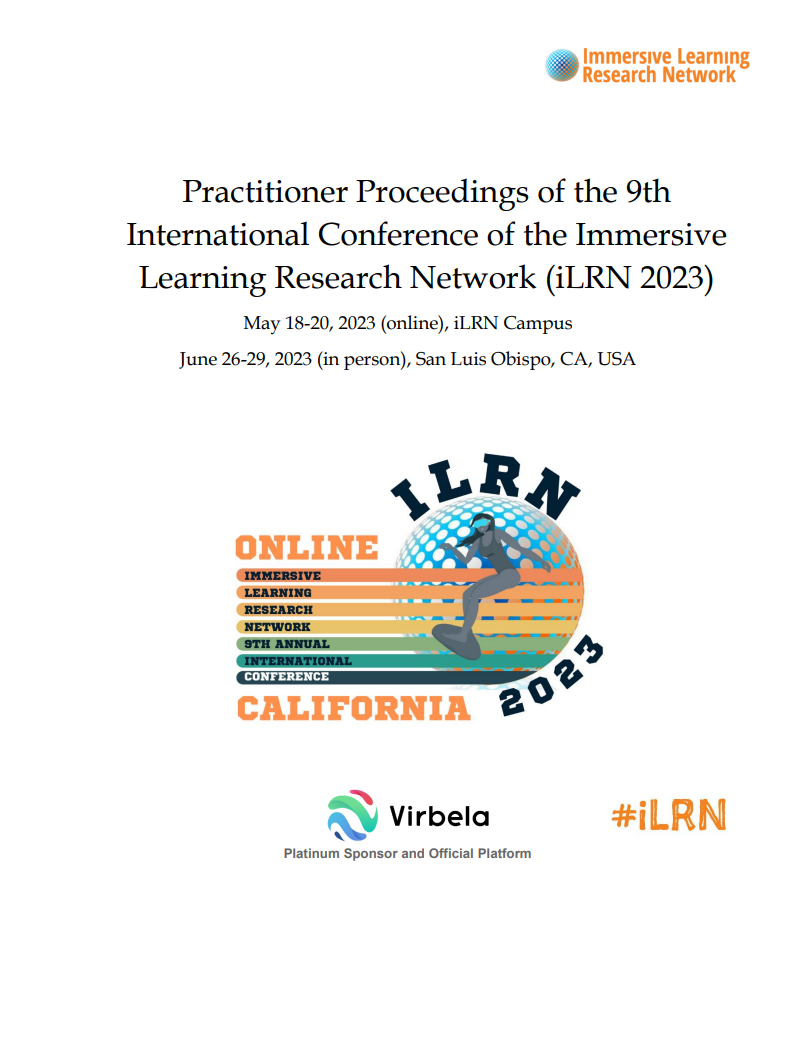Virtual Reality and Anatomy: Increasing Motivation and Learning Gains
DOI:
https://doi.org/10.56198/ITIG283VNKeywords:
Virtual Reality, Human Anatomy, Higher EducationAbstract
Anatomy and physiology courses are an integral part of the curriculum of the many Health, Wellness, and Sciences diploma (e.g., acupuncture, biotechnology, massage therapy, occupational therapy assistant and physical therapy assistant) and degree programs (Honours Bachelor of Science – Nursing Honours Bachelor Degree program) offered at Georgian College. In 2020, Georgian College received a Future Skills Centre (FSC) Shock-Proofing the Future of Work: Skills Innovation Challenge grant. As part of this grant, Georgian College is exploring, through two pilot projects, the benefits and challenges associated with integrating virtual reality
(VR) technology in anatomy courses in Health, Wellness, and Sciences programs to enhance learning by offering to students in addition to the conventional content, new ways (i.e., VR or non-immersive 2D programs) to engage, experience, and learn course content. More specifically, the goal of the two pilots is to examine the effects of using either VR anatomy or 2D anatomy on experience-based learning outcomes (motivational and enjoyment) and content-based learning outcomes (pre/post-test comparisons). The work-in-progress paper describes the development and implementation of the two pilot projects. For the last eighteen months, students enrolled in specific Health, Wellness, and Sciences diploma and degree programs have had the chance to engage with either human anatomy VR experiences or 2D human anatomy. So far, these pilots have generated important discussions among different interested parties regarding the viability of incorporating VR technology in the curriculum of Health, Wellness, and Sciences diploma and degree programs, as well as how VR anatomy-based experiences can be improved to meet the needs of different diploma and degree programs.
References
Radianti, J., Majchrzak, T. A., Fromm, J., Wohlgenannt, I.: A systematic review of immersive virtual reality applications for higher education: Design elements, lessons learned, and research agenda, Comput. Educ., vol. 147, p. 103778, (2020). doi: https://doi.org/10.1016/j.compedu.2019.103778.
Merchant, Z., Goetz, E. T., Cifuentes, L., Keeney-Kennicutt, W., Davis, T. J.: Effectiveness of virtual reality-based instruction on students' learning outcomes in K-12 and higher education: A meta-analysis, Comput. Educ., vol. 70, pp. 29–40, (2014).
Freina, L., Ott, M.: A literature review on immersive virtual reality in education: state of the art and perspectives, in The international scientific conference elearning and software for education, vol. 1, no. 133, pp. 10–1007 (2015).
Angel-Urdinola, D. F., Castillo-Castro, C., Hoyos, A.: Meta-Analysis Assessing the Effects of Virtual Reality Training on Student Learning and Skills Development, (2021).
Hamilton, D., McKechnie, J., Edgerton, E., Wilson, C.: Immersive virtual reality as a pedagogical tool in education: a systematic literature review of quantitative learning outcomes and experimental design, J. Comput. Educ., vol. 8, no. 1, pp. 1–32 (2021). doi: 10.1007/s40692-020-00169-2.
Huang, K.-T., Ball, C., Francis, J., Ratan, R., Boumis, J., Fordham, J.: Augmented versus virtual reality in education: an exploratory study examining science knowledge retention when using augmented reality/virtual reality mobile applications, Cyberpsychology, Behav. Soc. Netw., vol. 22, no. 2, pp. 105– 110, (2019).
Krokos, E., Plaisant, C., Varshney, A.: Virtual memory palaces: immersion aids recall, Virtual Real., vol. 23, no. 1, pp. 1–15, (2019).
Maresky, H. S., Oikonomou, A., Ali, I., Ditkofsky, N., Pakkal, M.,Ballyk, B.: Virtual reality and cardiac anatomy: Exploring immersive three-dimensional cardiac imaging, a pilot study in undergraduate medical anatomy education, Clin. Anat., vol.32, no. 2, pp. 238–243, Mar. (2019). doi: https://doi.org/10.1002/ca.23292.
Kavanagh, S., Luxton-Reilly, A., Wuensche, B., Plimmer, B.: A systematic review of Virtual Reality in education, Themes Sci. Technol. Educ., vol. 10, no. 2, pp. 85–119, (2017).
Makransky, G., Lilleholt, L.: A structural equation modeling investigation of the emotional value of immersive virtual reality in education, Educ. Technol. Res. Dev., vol. 66, no. 5, pp. 1141–1164, (2018).
Ianì, F.: Embodied memories: Reviewing the role of the body in memory processes, Psychon. Bull. Rev., vol. 26, no. 6, pp. 1747–1766, (2019). doi: 10.3758/s13423-019-01674-x.
Macedonia, M.: Embodied Learning: Why at School the Mind Needs the Body , Frontiers in Psychology, vol. 10. p. 2098, (2019). [Online]. Available: https://www.frontiersin.org/article/10.3389/fpsyg.2019.02098
Huang, H.-M., Rauch, U., Liaw, S.-S.: Investigating learners' attitudes toward virtual reality learning environments: Based on a constructivist approach, Comput. Educ., vol. 55, no. 3, pp. 1171–1182, (2010).
Lin, Y.-G., McKeachie, W. J., Kim, Y. C.: College student intrinsic and/or extrinsic motivation and learning, Learn. Individ. Differ., vol. 13, no. 3, pp. 251–258, (2003).
Boekaerts, M.: Motivation to learn, Success. Sch., pp. 101–120, (2002).
Hattie, J.: Visible learning: A synthesis of over 800 meta-analyses relating to achievement. Routledge, (2008).
Cicek, I., Bernik, A., Tomicic, I.: Student Thoughts on Virtual Reality in Higher Education—A Survey Questionnaire, Information, vol. 12, no. 4, p. 151, (2021).
Downloads
Published
Conference Proceedings Volume
Section
Categories
License
Copyright (c) 2023 The Immersive Learning Reseach Network

This work is licensed under a Creative Commons Attribution-NonCommercial-NoDerivatives 4.0 International License.
The papers in this book comprise the proceedings of the meeting mentioned on the cover and title page. They reflect the authors' opinions and, in the interests of timely dissemination, are published as presented and without change. Their inclusion in this publication does not necessarily constitute endorsement by the editors or the Immersive Learning Research Network.
Contact: publications@immersivelrn.org





